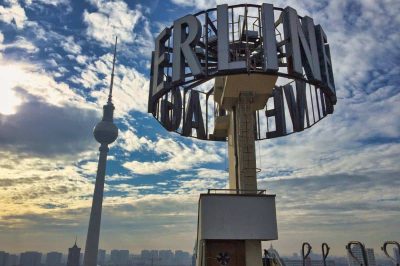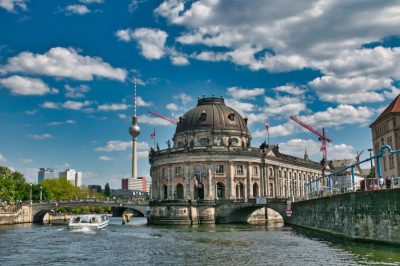It was a showpiece of the GDR government and a symbol that was supposed to show that anti-fascist Germany had risen anew and better from the ruins of the Third Reich – the Stalinallee. Ostensibly in honor of the Soviet dictator, one of the largest construction projects of the GDR was built on the ruins of the old Frankfurter Allee. Today, the neoclassical buildings are among the most famous East Berlin sights. Reason enough to introduce you to the Karl Marx Allee Berlin and its most beautiful buildings. If you are interested in more GDR buildings, just click here.
History of Karl Marx Allee
Even in the days of the Kaiser, the Frankfurter Allee ran along the same route through Friedrichshain. The name indicated the direction to Frankfurt/Oder on today’s German-Polish border. Later also known as Frankfurter Chaussee, the street was severely destroyed by air raids and bombardment during the war. Frankfurter Allee shared this fate with Grosse Frankfurter Straße, as the section west of Frankfurter Tor was called.
Selecting Frankfurter Allee
But why was this particular street chosen for the construction of the magnificent, yet expensive buildings? There were several reasons. On the one hand, the street was conveniently located and ran right through the middle of East Berlin. But there were also historical reasons, because barricade fights took place here both in 1848 and during the November Revolution at the end of the First World War. These were seen by the GDR government as a struggle of workers against the authorities and thus placed in a long line of revolutionary struggles against the monarchy. Since the broad street had been completely destroyed in the Second World War, was located in the center and formed an important east-west connection, it was virtually ideal for implementing the GDR vision of contemporary living.
Renaming the street to Stalinallee and Karl Marx Allee
In 1949, the entire magistrale, i.e. both Frankfurter Allee and Große Frankfurter Straße, was renamed Stalinallee on the occasion of the 70th birthday of Soviet dictator Josef Stalin. However, the street retained this name only until 1961, when the Khrushchev Thaw took place in the Soviet Union. The communist party under Nikita Khrushchev distanced itself from the crimes of the dictator. The SED (Socialist Unity Party) also followed suit in the GDR. From then on, the former Frankfurter Allee functioned as such again and the western section, the former Große Frankfurter Straße, was renamed Karl-Marx-Allee in honor of the philosopher and intellectual pioneer of communism. To this day, the two streets bear these names.
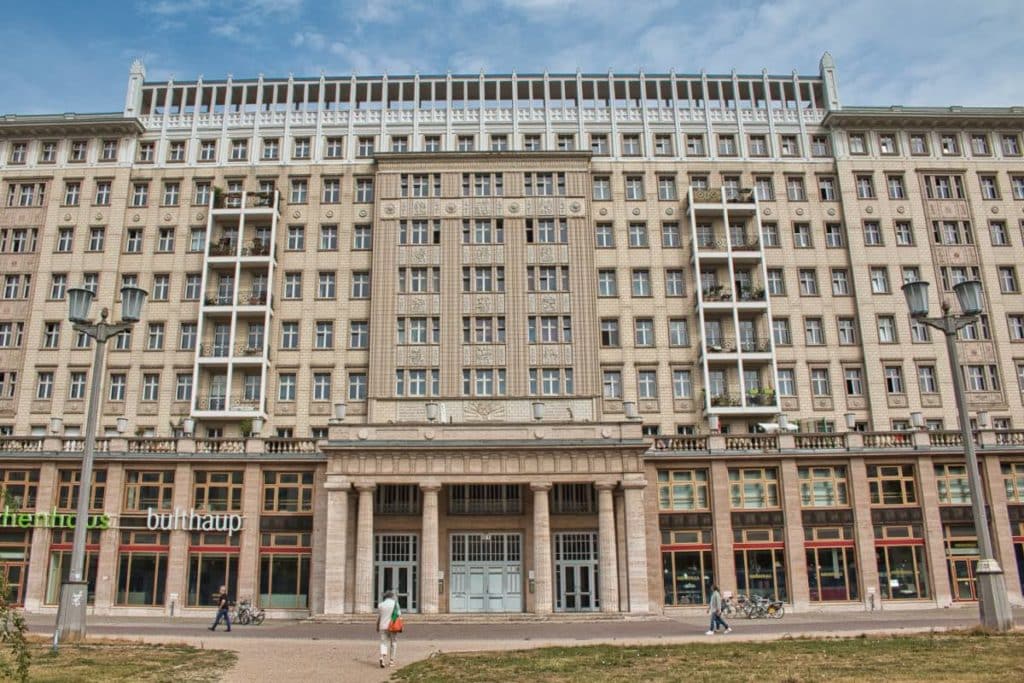
Inspiration from the Soviet Union
After two ambitious building projects had already been implemented with the arcade houses (see below), the SED government wanted to make a big leap in the early 1950s. The arcade houses, with their Bauhaus principles, were henceforth considered bourgeois. A delegation traveled to Kiev, Moscow, Stalingrad (today Volgograd) and Leningrad (today St. Petersburg) to draw inspiration from the urban planning of the Soviet Union. The delegation returned with many ideas and called an architectural competition to redesign the avenue as part of the “National Reconstruction Program Berlin”.



Palaces for the workers
Both German and Soviet architects were involved in the planning. Buildings were created in the style of Soviet Neoclassicism with elements of the Confectioner’s Style and Schinkel’s Classicism. In this way, the city planners followed an important Soviet directive: orientation towards the New Building style in the Soviet Union, incorporating local building traditions. At the time, the buildings had everything one could wish for, which was by no means a matter of course in Berlin: district heating, elevators, parquet flooring, private bathrooms and kitchens, and so on.
A guy from Southern Harz starts the process
The most important architect was Hermann Henselmann, a native of the southern Harz region, who became chief architect to the Berlin magistrate in the following years on the strength of his achievements in Stalinallee. In the years that followed, he left his mark on the city like no other in many other places as well. The television tower and the teacher’s house on Alexanderplatz breathe a noticeably different architectural spirit, but they also go back to him.
In 1951, the high-rise building on Weberwiese (see below) was a kind of model building, a prototype for the further development of the street, which, however, was the work of Hans Scharoun and not Henselmann. The idea of such buildings was then abandoned, however, and Henselmann prevailed with his neoclassical buildings. After the fall of the Berlin Wall, Henselmann distanced himself from his buildings, with which he always had an ambivalent relationship.
The elite of the construction workers rebels against the dictatorship
The construction workers on Stalinallee were the most active participants in the popular uprising in June 1953. They protested against the economy of scarcity and the constantly rising labor standards of the planned economy. This was a disaster for the city planners, but it only stopped the development on Stalinallee for a short time. By 1958, the buildings that are most characteristic today were erected in the neoclassical style, all located between Straussberger Platz and Frankfurter Tor. Even at that time, the GDR government used the impressive backdrop for its political marches, a tradition that was maintained until the fall of the Wall.
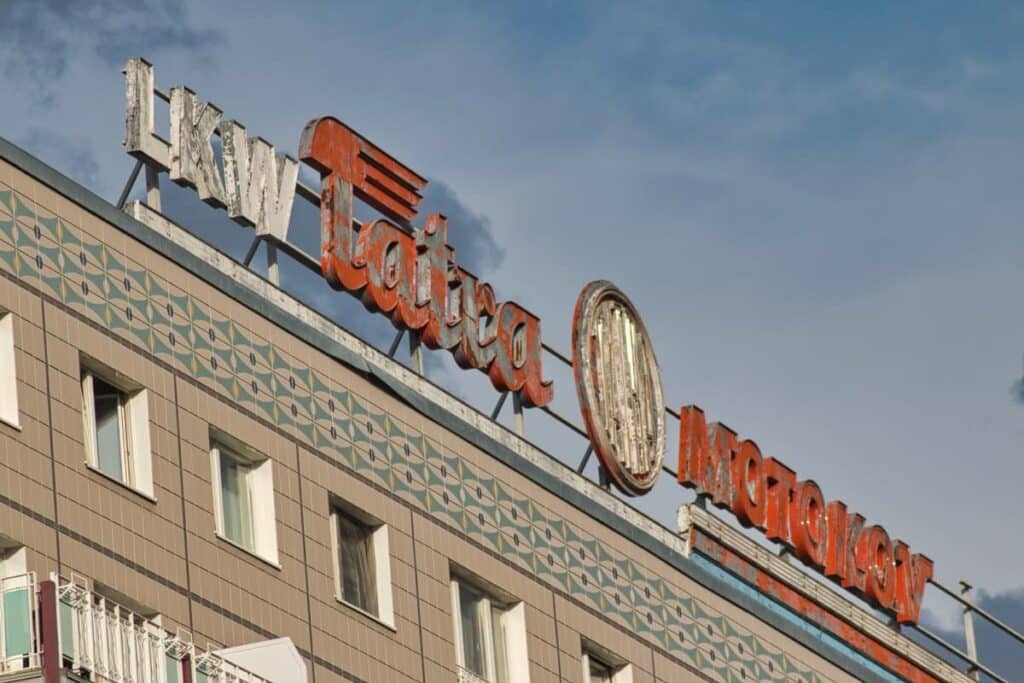
Pragmatism instead of ostentation
Actually, the plan was to continue the representative buildings all the way to Alexanderplatz. The problem was that the costs were exorbitantly high. In addition, a different architectural and political wind was already blowing in the GDR in the 1960s. Therefore, it was decided to design the area from Strausberger Platz to Alexanderplatz with prefabricated buildings with eight to ten stories. Café Moskau, the Mokka-Milch Eisbar and the Kino International were also built during this phase. These buildings are among the icons of GDR modernism.
By the mid-1960s, the most important work on the street had then been completed and the avenue presents itself today in much the same way as it did then, even though Karl Marx Allee Berlin has recently been made fit for the future (see below) and there are still plans to complete the ensemble.

The most beautiful buildings of Karl Marx Allee
What makes the Allee so special are not individual buildings, but the monumental dimensions that characterize the street. Wide streets, a green central strip and the buildings towering high into the sky were meant to symbolize the strength of the GDR and could stand in the same way in Moscow or Kiev. In the following we also want to present the most exciting buildings of Karl Marx Allee Berlin.

Confectionery style residential buildings
The most characteristic buildings of the boulevard were built in the 1950s. The five huge apartment blocks with up to 13 stories are still used as apartments today. They are designed very differently. Pseudo-antique columns, magnificent mosaics, friezes, gables – here you will find many exciting photo motifs.

Towers at Frankfurter Tor and Strausberger Platz
The towers or their domes at Frankfurter Tor are modeled on the towers at Gendarmenmarkt and reflect the tradition of Prussian classicism. At the other end, the towers at Strausberger Platz are two examples that feature elements of Art Deco. The tower houses were designed by Henselmann and are intended to look like city gates. And indeed, Karl-Marx-Allee with its gigantic dimensions is still something like a city within the city.
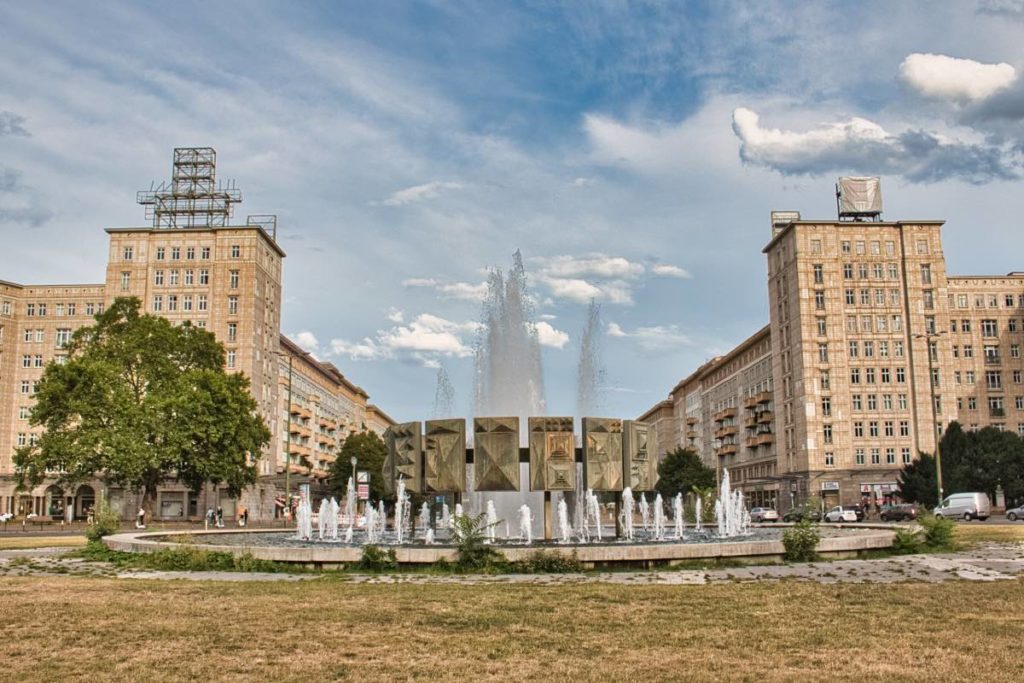
Fountain at Strausberger Platz
Strausberger Platz marks the transition of the districts of Mitte and Friedrichshain-Kreuzberg. It is the only “real” square on Karl Marx-Alle and has an oval area with an impressive fountain in its center. Since 1966, several water fountains have surrounded a circular framework of eight pillars with rectangular copper plates here, both inside and outside. The water mist makes it seem as if the work of art is floating in the air. We think that Fritz Kühn’s fountain, in combination with the houses on Karl-Marx-Allee, is one of the best photo motifs on the street. Here at the square there is also a bust in honor of Karl Marx.
Skyscraper at the Weberwiese
The skyscraper on Weberwiese was the first high-rise building in the GDR in 1952 and is often referred to as Berlin’s first socialist building. The aim was to reach high into the sky, both architecturally and ideally. Nine stories, spread over 35 meters, were to mark the dawn of a better time. Here Henselmann created one of his most important buildings. A Berthold Brecht quote still adorns the entrance today. Some of the black marble used here came from Hermann Göring’s demolished country residence.
German sports hall
The German Sports Hall (Deutsche Sporthalle) was one of the most interesting buildings in the former Stalinallee. The emphasis is on the word “was”, because unfortunately the building had to be demolished again as early as 1972 due to construction defects. It was built in 1951 on the occasion of the World Festival of Youth and Students according to designs by Richard Paulick in just a few months opposite to a Stalin monument on the other side of the street, which was unveiled at the same time. The modernist building had a neoclassical entrance hall in front of it and was clad in panels originally intended to help the Nazis transform Berlin into Germania.
Unfortunately, there was a shortage of steel girders during construction, so that the originally planned roof could only be implemented in the form of a makeshift construction. This later became a problem, so that the building with its chic facade of columns, a relief and several statues had to be torn down again as early as 1971. After all, sports competitions, exhibitions and political events were held in front of up to 5,000 spectators until then.
By the way, the Stalin monument is also gone. But a part of it, namely Stalin’s ear and a part of his beard, can be seen today at Café Sibylle. The café also offers guided tours. Then you can also go up to the roof of the venerable Karl Marx bookstore and have a sensational view of the boulevard, which promises great photos.
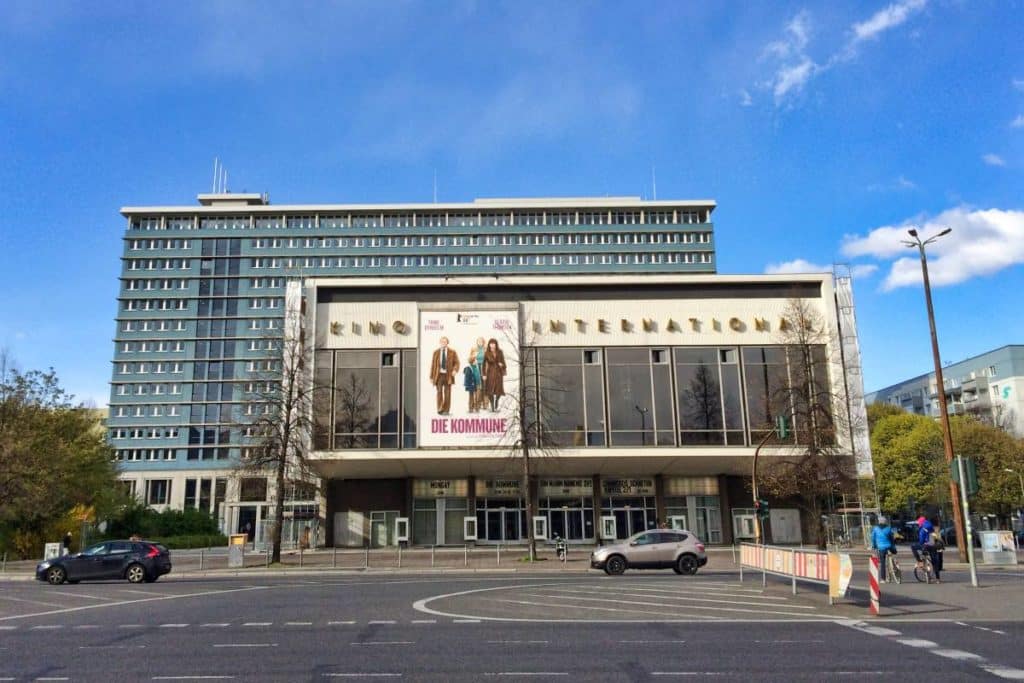
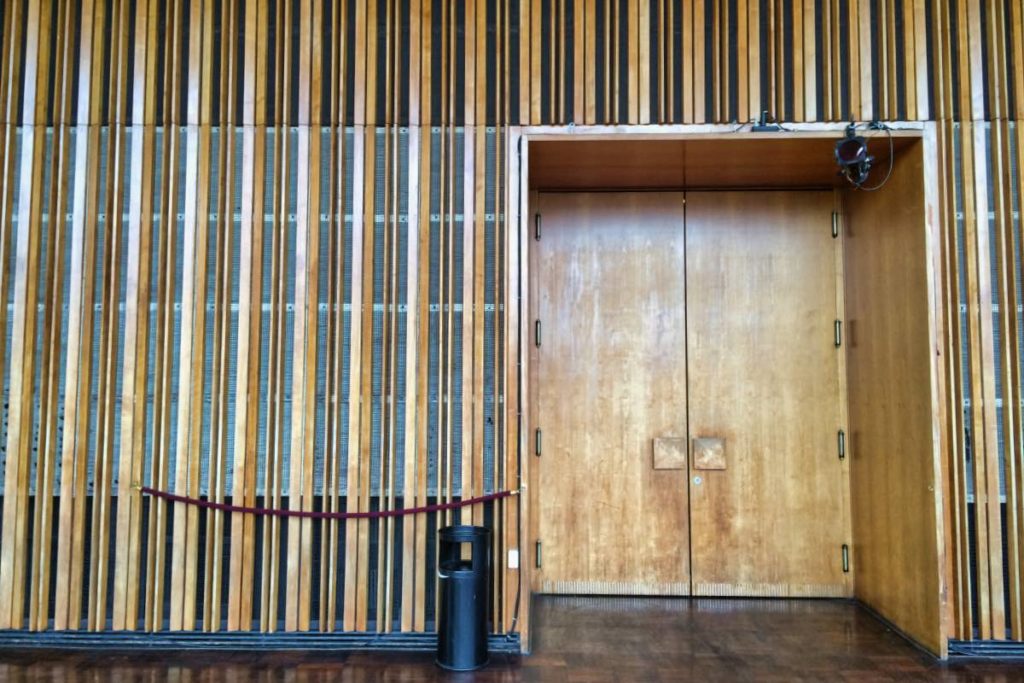


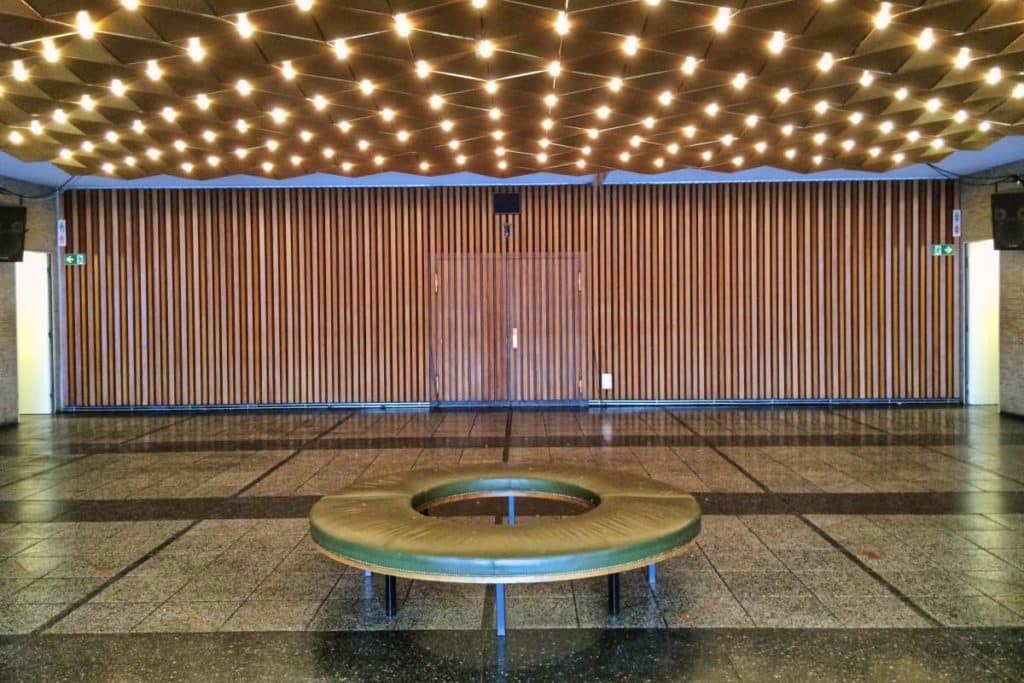
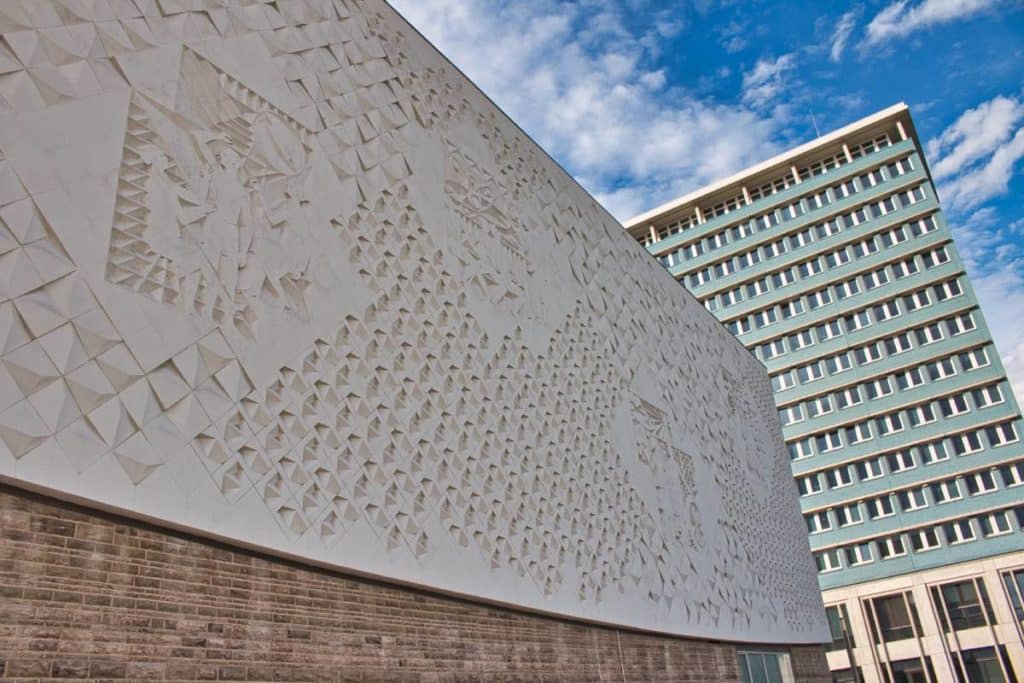
Kino International
Kino International was once the largest and most modern cinema in the country. Today, film premieres are still held here. The building is particularly exciting because it is representative of the buildings of the third construction phase, i.e. modernism, and its canopy, which is well worth seeing, still delights architecture fans.
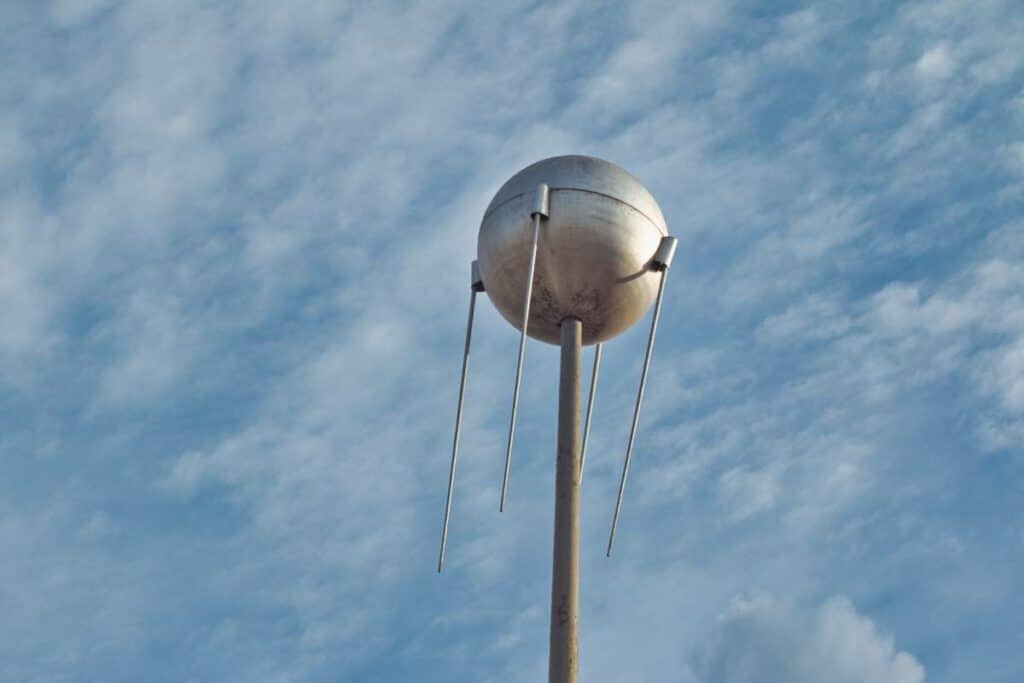

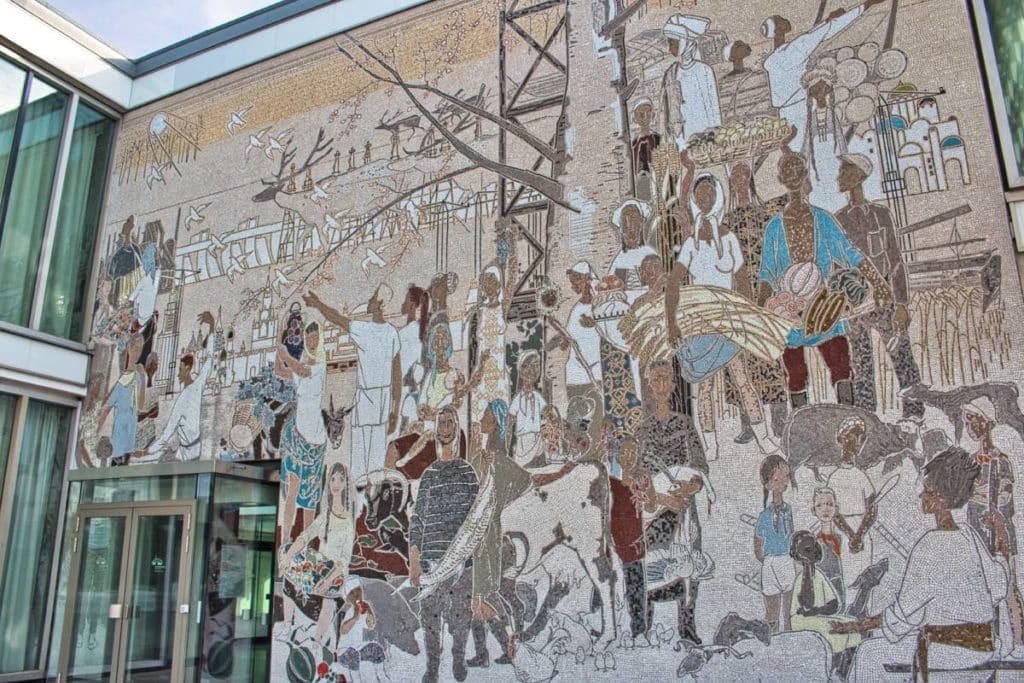
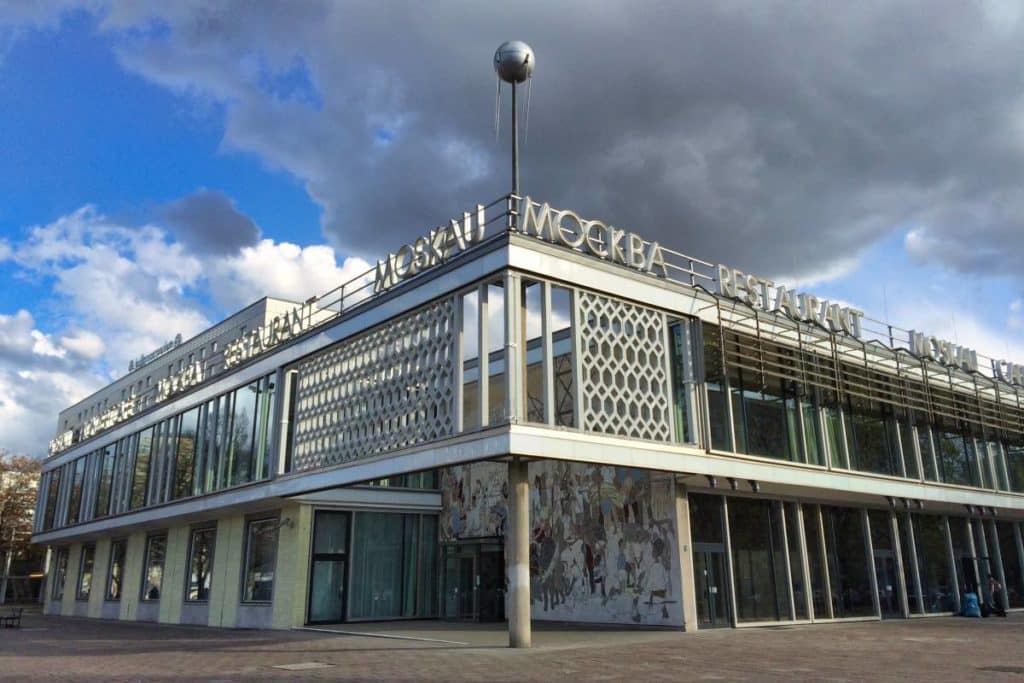
Café Moscow and mocha milk ice cream bar
The legendary Mokka-Milch-Eisbar right next to it, like the cinema, was built in the second phase of construction from 1961 to 1964 and was one of five pavilions in the avenue. The yellow-tiled building is worth seeing, as is Café Moskau, with its characteristic honeycomb struts and the mosaic “From the Life of the Peoples of the Soviet Union.” Fun detail: the full-size Sputnik satelite, a gift from the Soviet ambassador. Incidentally, the mocha-milk ice cream bar was so popular that the GDR even had its own song about it:
Café Warschau
The Café Warschau also dates back to that time. You won’t get East German delicacies here anymore, but the exciting Computer Games Museum is housed here. For 9 euros, you can get an entertaining insight into the development of computer games and arcade machines every day from 11 a.m. to 8 p.m., and of course you can gamble yourself.

Café Sibylle
By the way, it’s only about 1 km from here to Café Sibylle, another legendary institution on Karl-Marx-Allee. Named after the biggest women’s magazine of the GDR, you can still get coffee and cake here and marvel at the original interior design. Here you will also find an exhibition on the history of Karl Marx Allee Berlin and Stalinallee with old photos and plans as well as everyday objects from the 50s and 60s.
Arcade houses
In the Karl-Marx-Allee 102/104 and 126/128 are two of the most interesting houses of the whole Karl-Marx-Allee. They were built between 1949 and 1951 and go back to the ideas of Hans Scharoun. He was one of the most important representatives of the so-called Organic Architecture and shortly after the Second World War he was the city building inspector of Berlin. He had great plans for the reconstruction of Berlin, but they were never put into practice.
In his function as head of the Institute for Construction, these two remarkable buildings could be realized after all. As part of the so-called “Wohnstadt Friedrichshain,” two five-story buildings were constructed that pick up on many Bauhaus motifs. The huge buildings have one- and two-room apartments. The name “Laubenganghäuser” (arcade buildings) comes from the fact that they have corridors open to Karl-Marx-Allee on each floor. Today, the two buildings, each just over 100 meters long, form an interesting architectural contrast to the neoclassical buildings on the street.

The Stalinallee today
After reunification, many buildings were vacant. Hard to believe, given the unique building fabric. However, the buildings had become outdated and were extensively renovated in recent years. Today, just as in GDR times, the Karl Marx is once again one of the top addresses in the city. It still serves as a prestige project for the powerful, but now under different auspices. The street is to become an important part of Berlin’s new traffic concept. The previous three lanes have been trimmed down to two. Instead of parking spaces, there is now a green area, and the city’s widest bike lanes now run along it. The asphalt has been replaced, and thanks to the modern mastic asphalt, cars are now much quieter on the road than before.
Things have also been done in other places along the street. The gaps in the rows of linden trees have been planted and new street lights have been installed, in the style of the 60s. The work took a good two years to complete. However, there was also a lot of criticism for the conversions, for example, there were now too few parking spaces available because the central reservation was used as a green area, critics warned. The costs, on the other hand, were still within bounds at 13 million for the ambitious project.
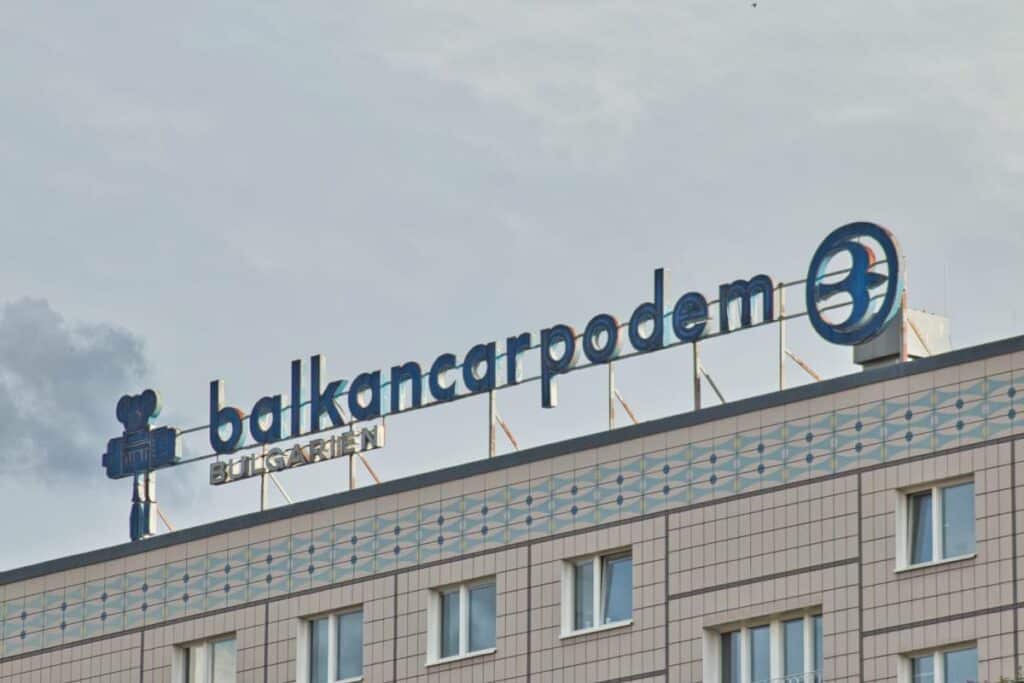
Karl Marx Allee Berlin as a UNESCO World Heritage Site?
The city government now sees Karl-Marx-Allee as fit for the 21st century. In 2021, Berlin’s cultural senator even wants to submit a proposal to UNESCO to include Karl-Marx-Allee in the World Heritage List along with the Hansa Quarter in West Berlin. Justification: In no other place can one observe the competition of cultures and political systems as well as here. We keep our fingers crossed!
By the way, building gaps are still to be closed. The few pavilions that were built during the third construction phase in the 1960s are to be supplemented by additional buildings. It is not yet clear if and when this will happen, but the architects’ designs have already been submitted. Whether they come or not, we think Karl-Marx-Allee is one of the most exciting and beautiful streets in the capital and always worth a visit!
Book reccomandation for Karl Marx Allee Berlin
No products found.
This book gives a great overwiev about all the buidlings at Karl Marx Allee and tells many details and interesting stories about the street.
No products found.
The Lonely Planet Guide gives you all the practical information you need for a Berlin trip.


